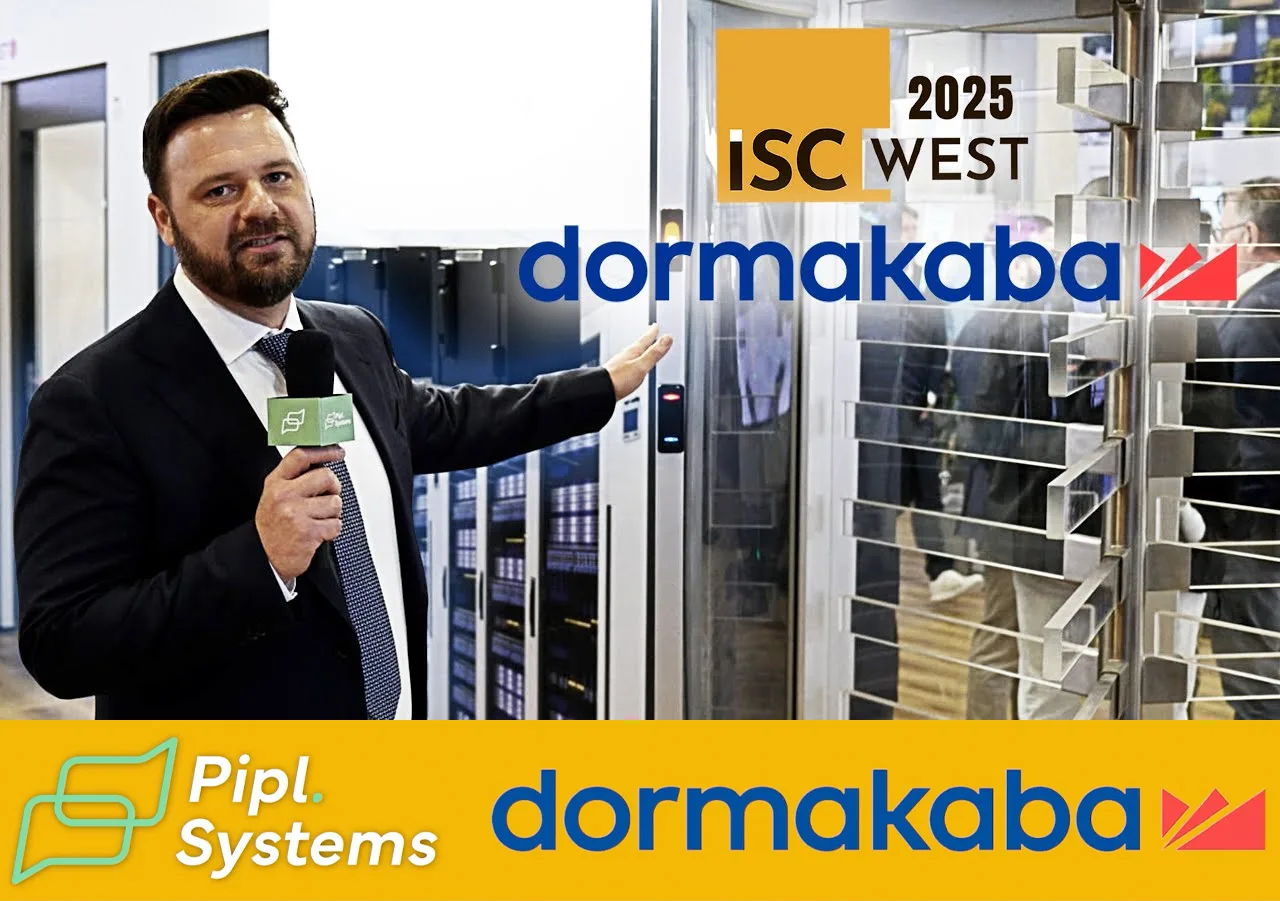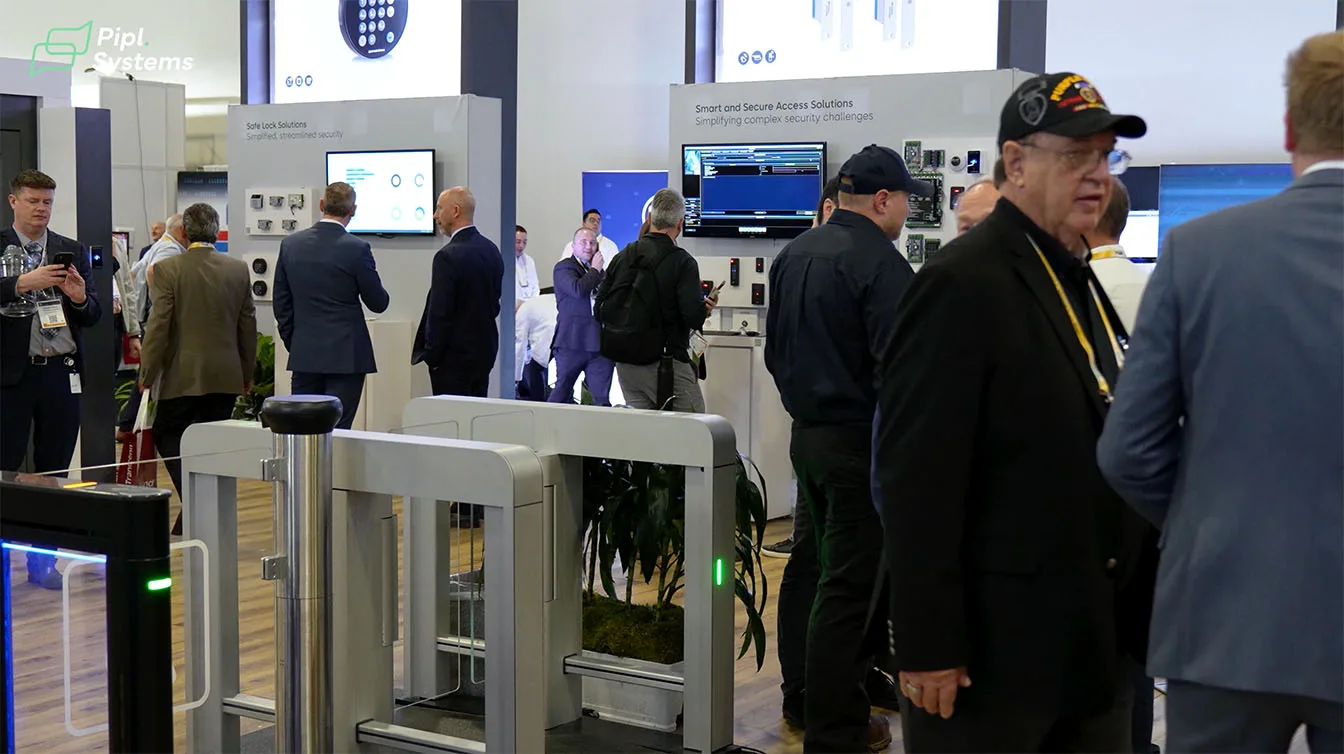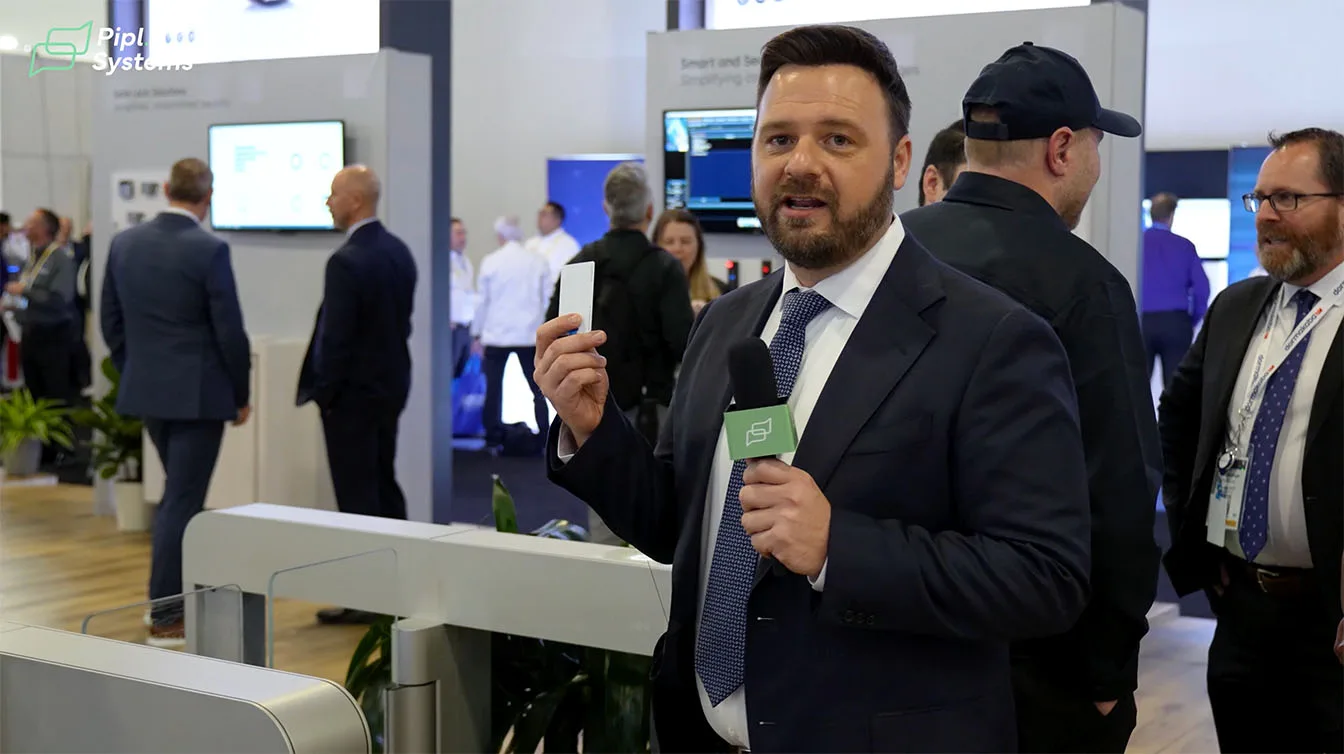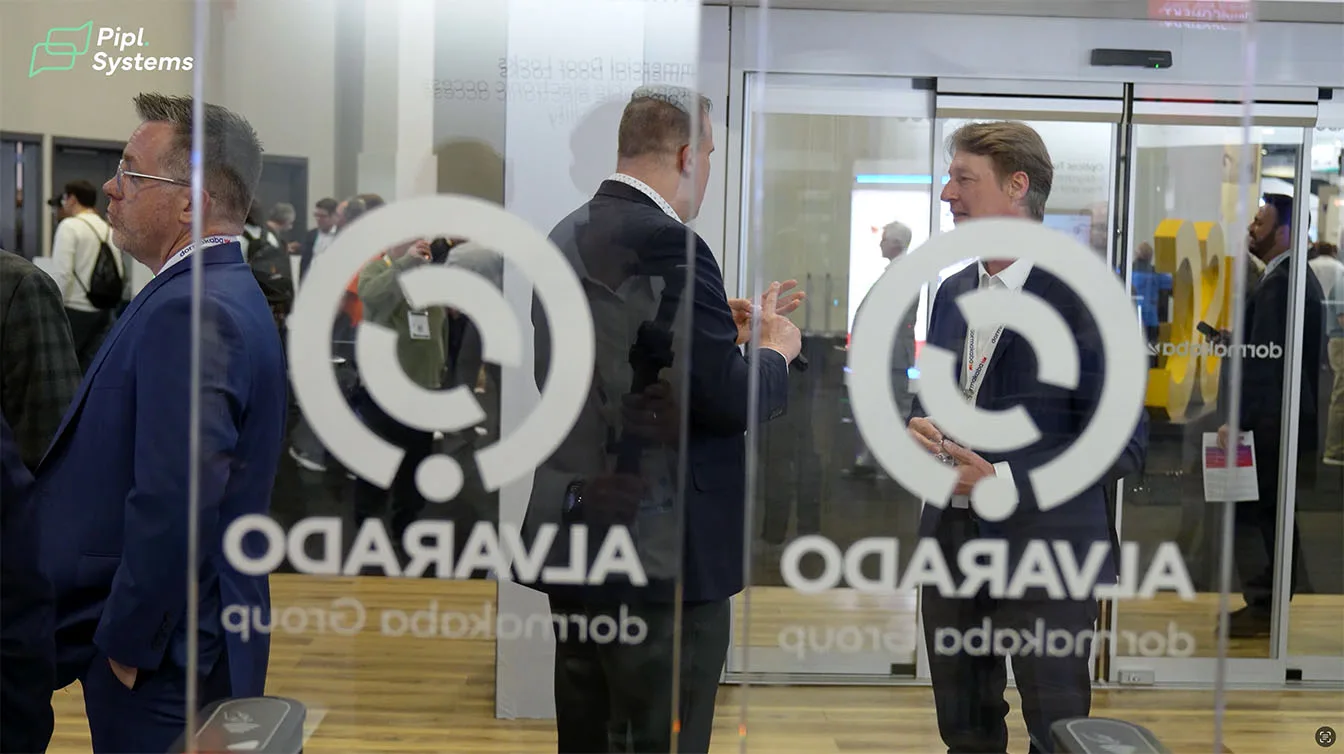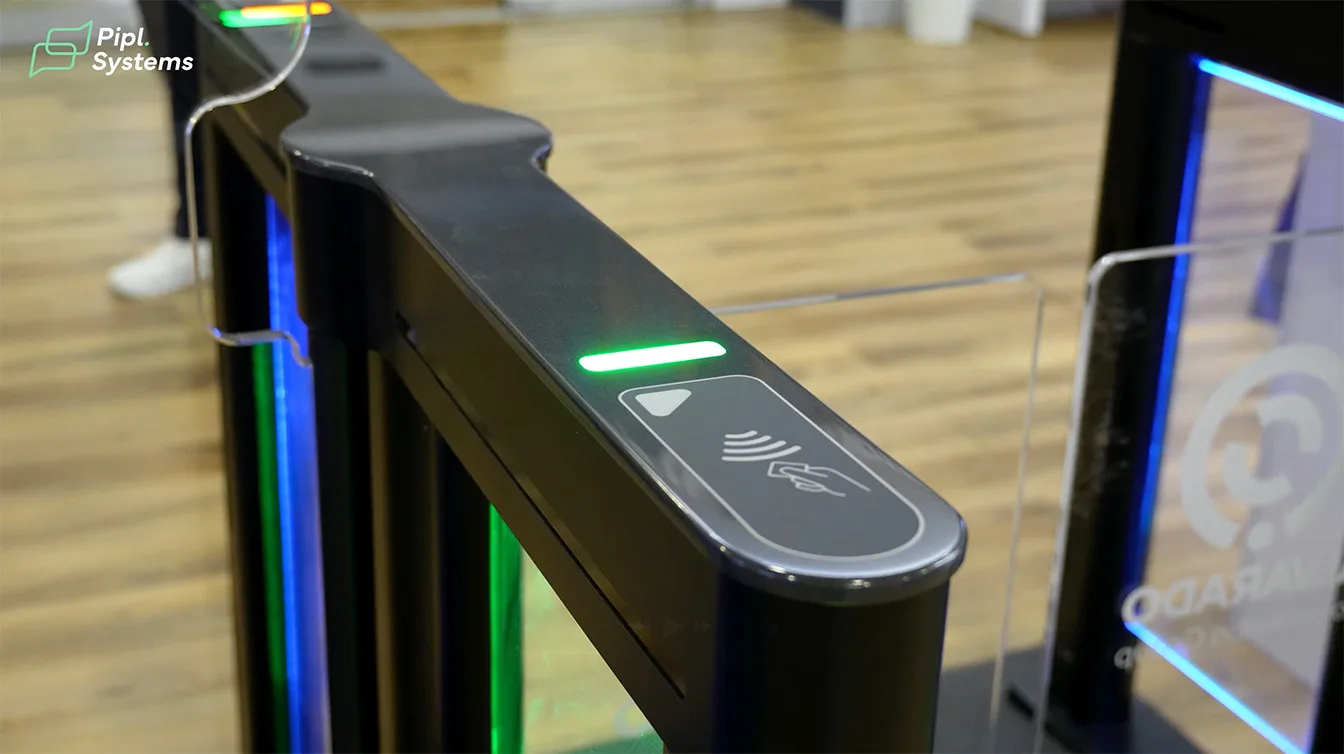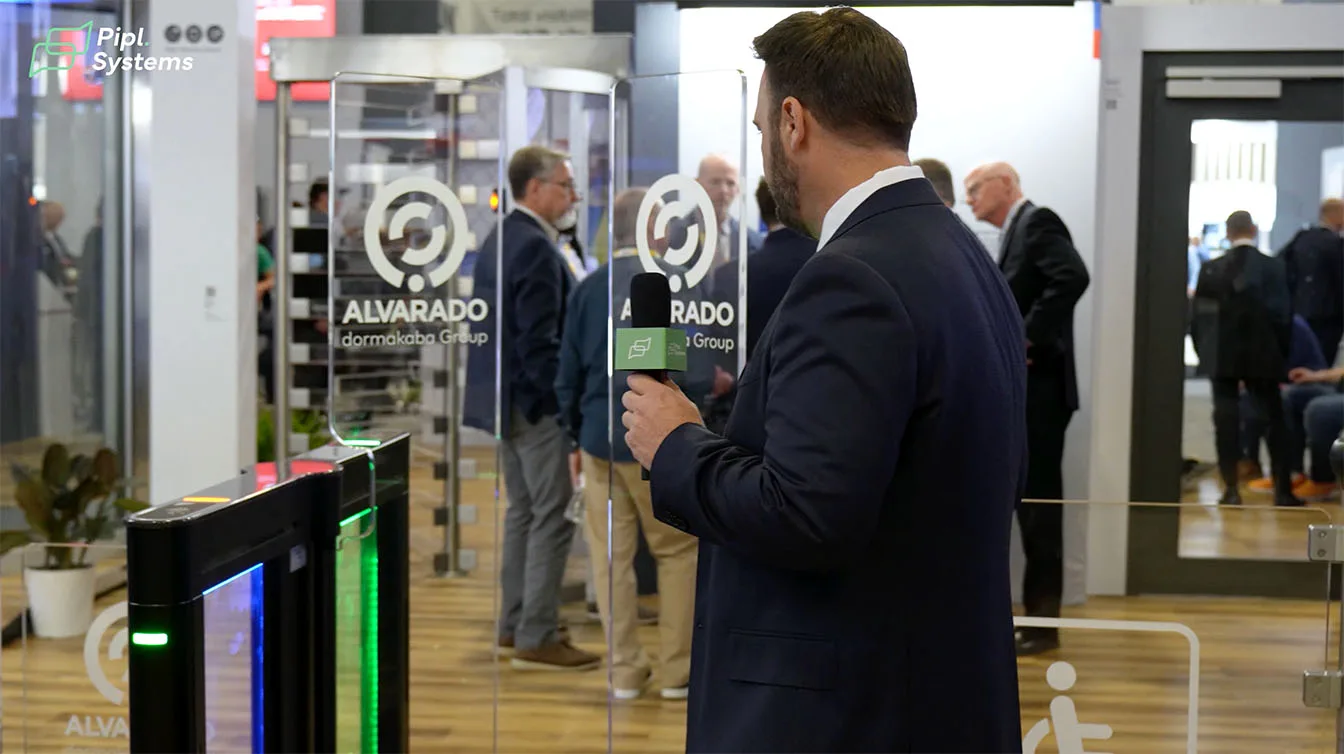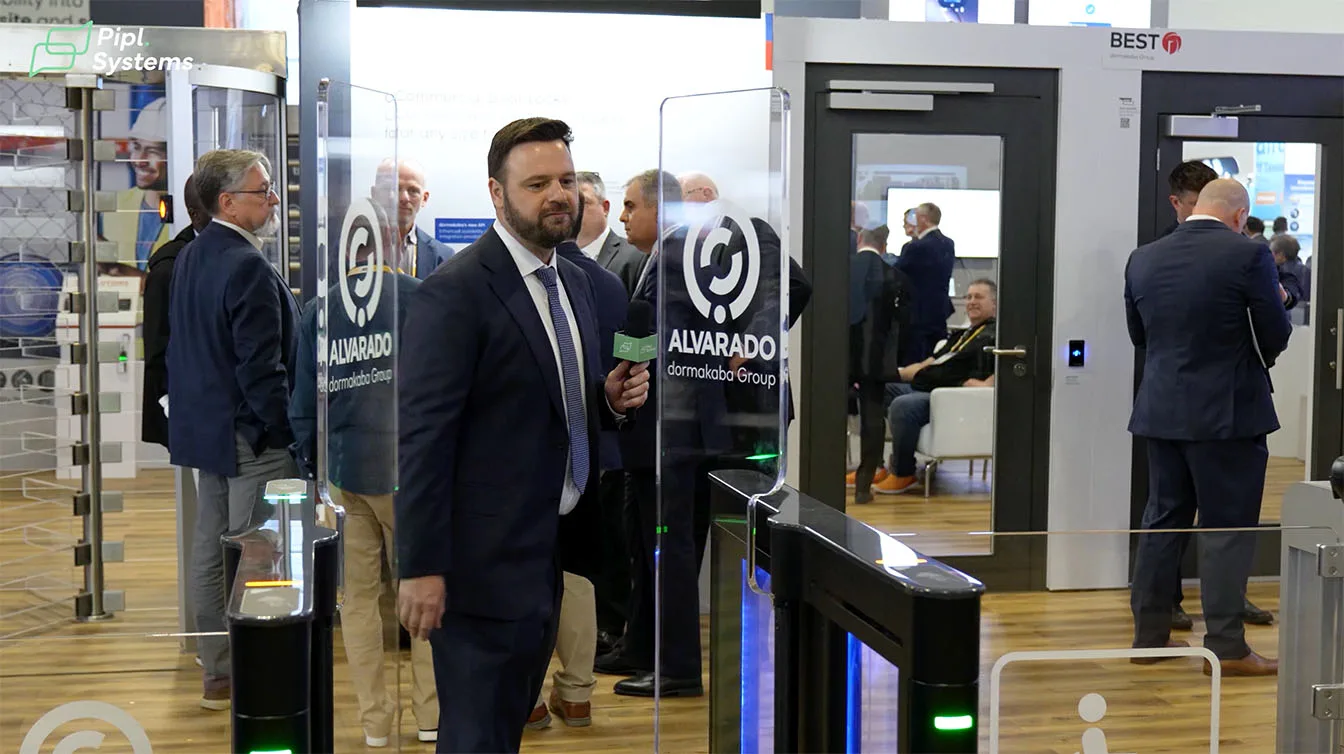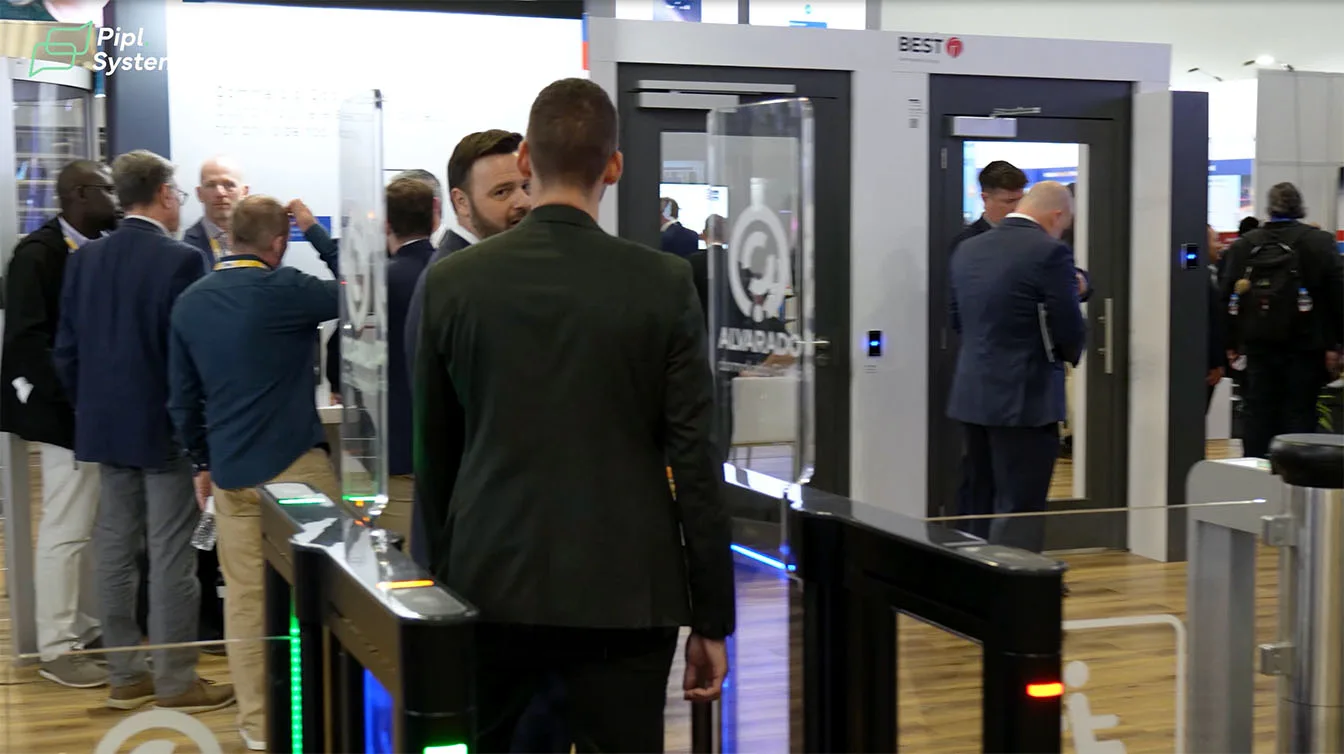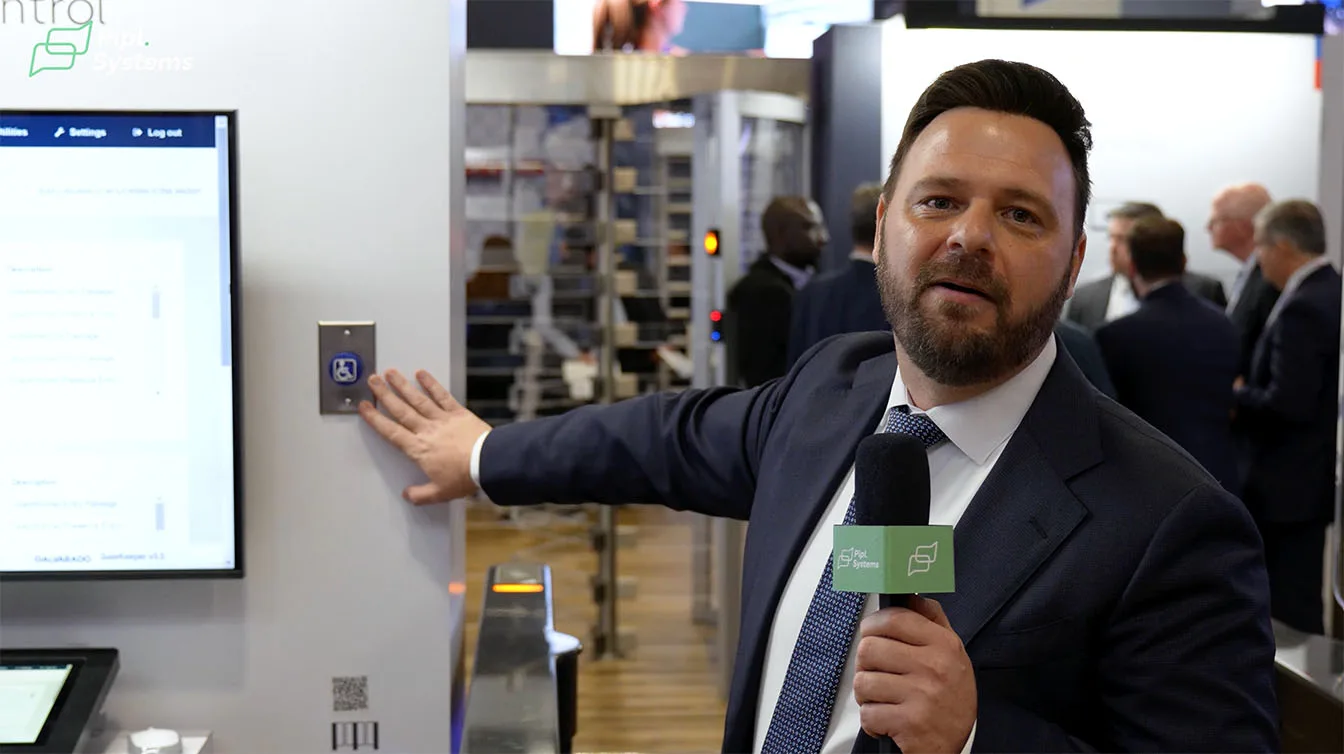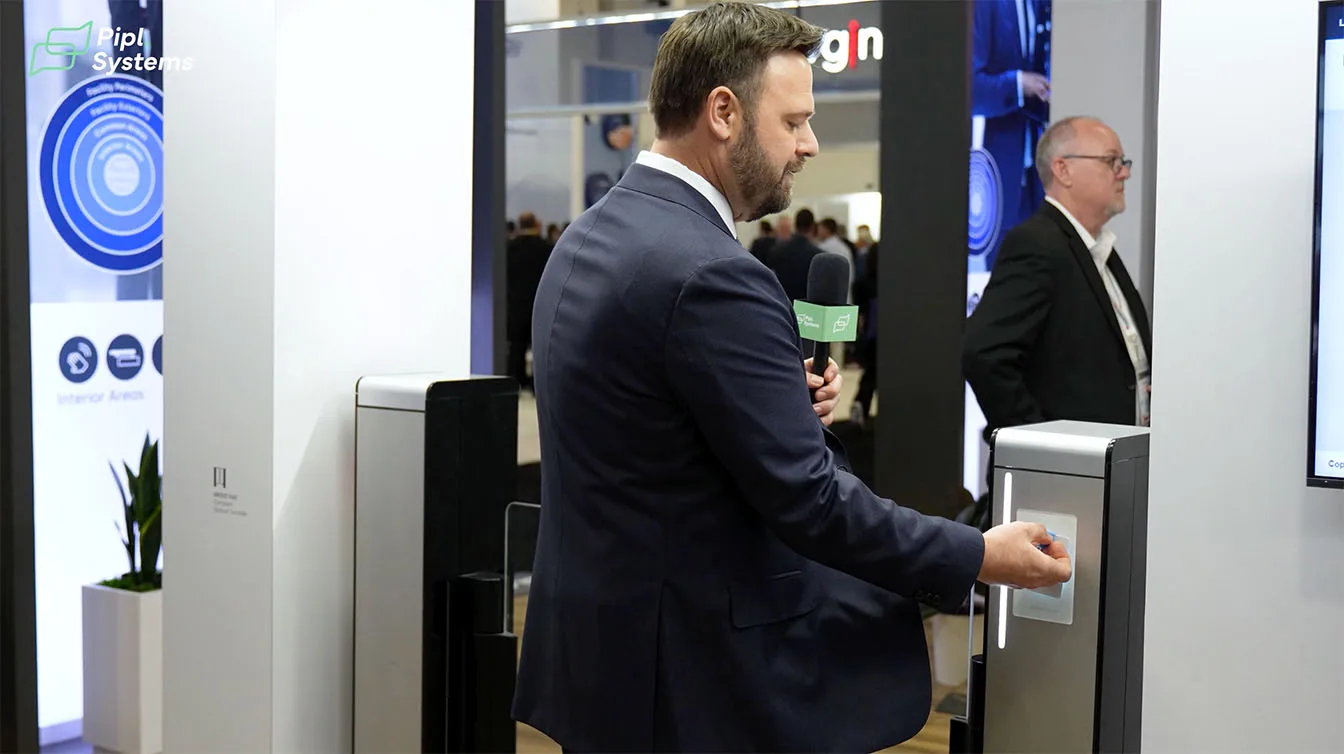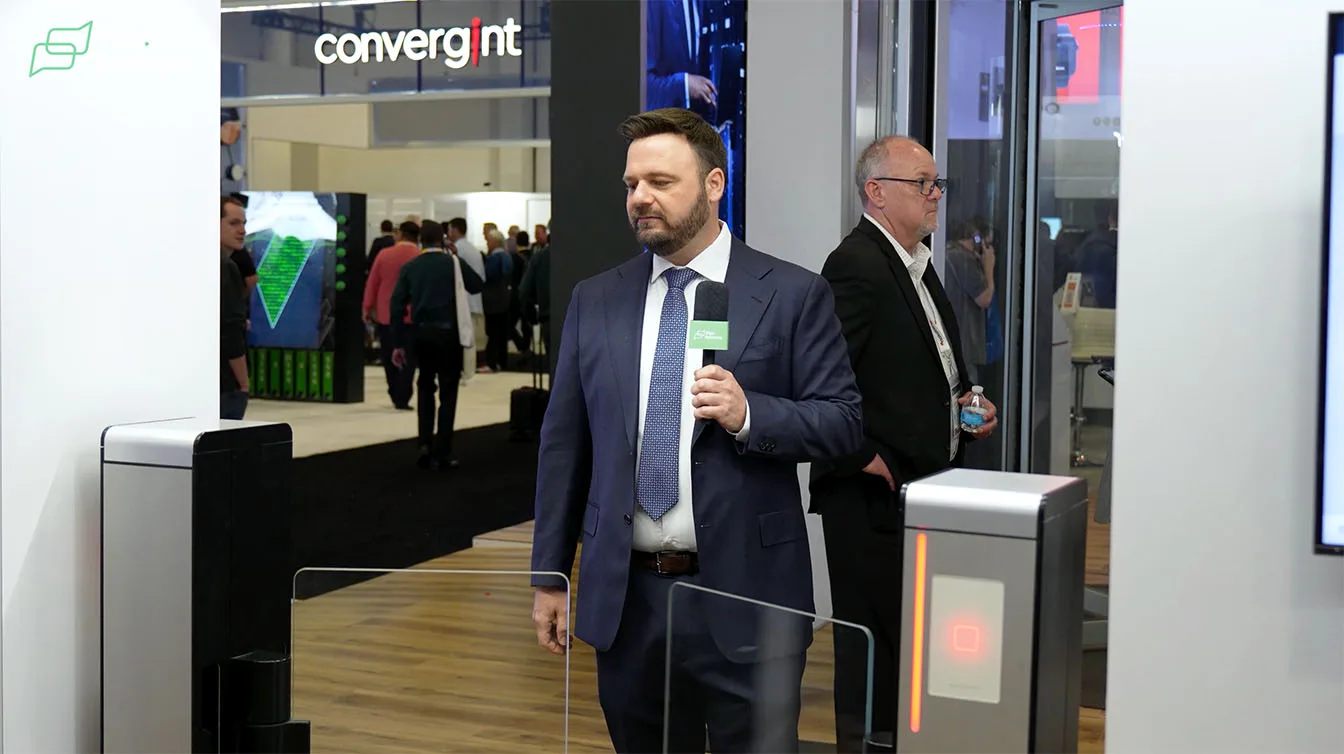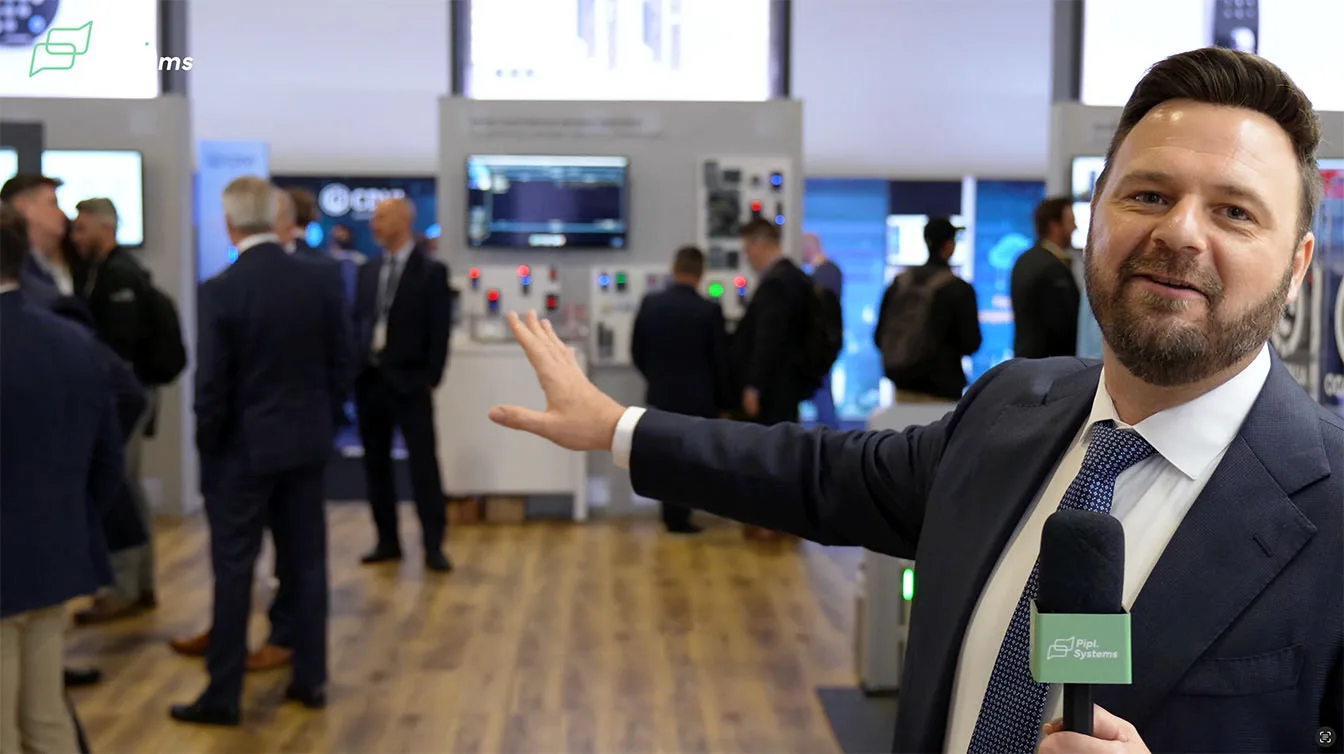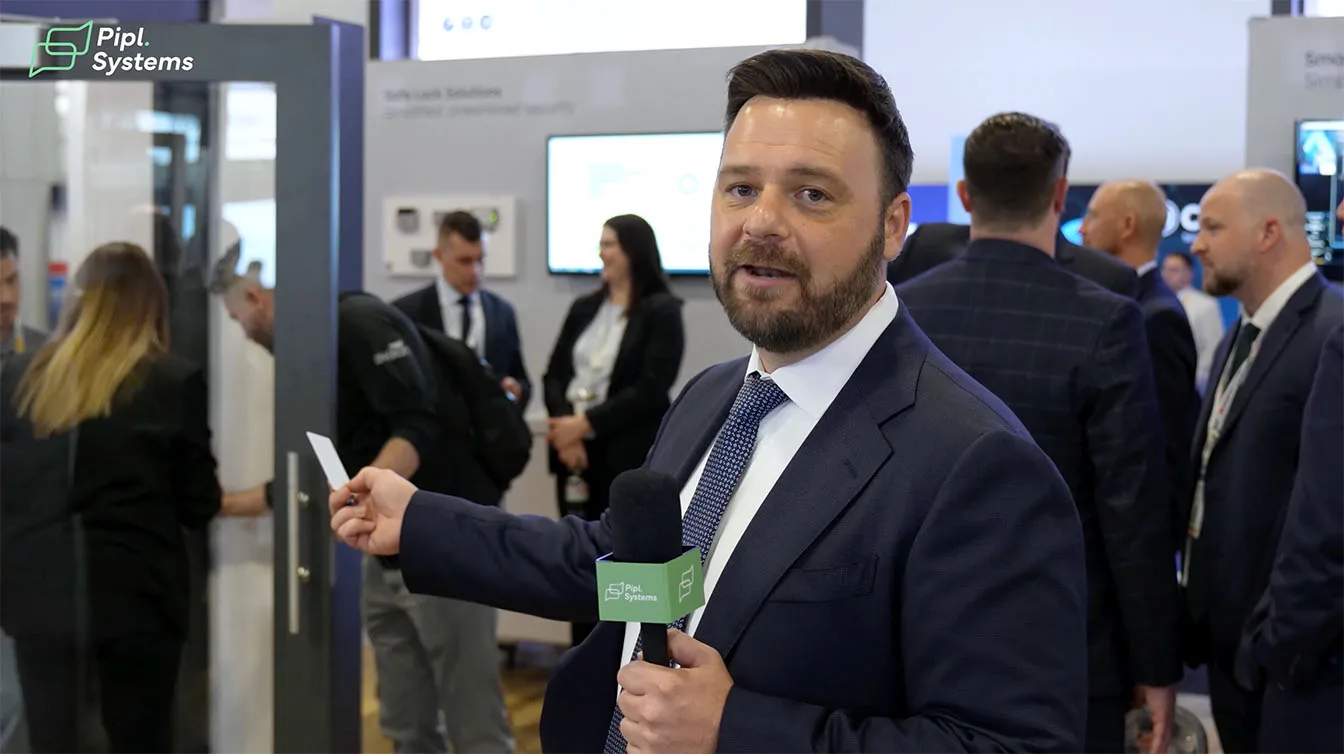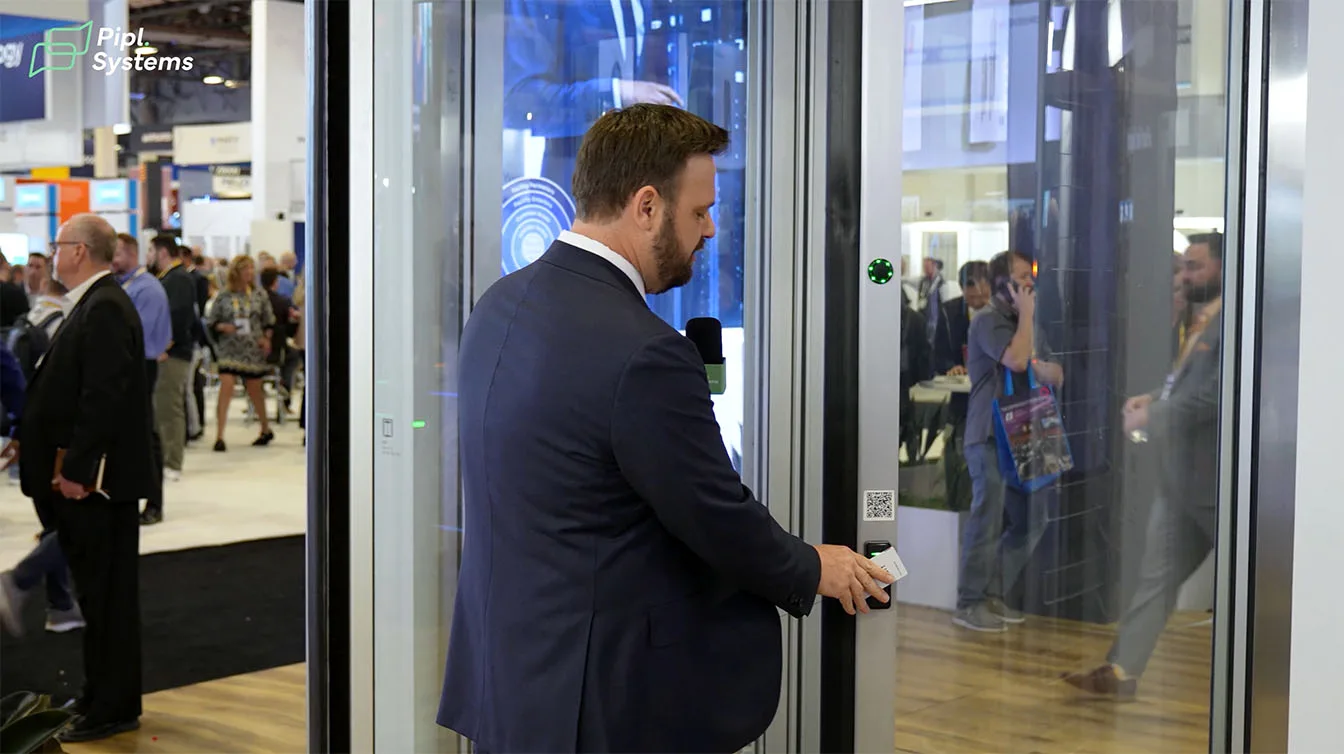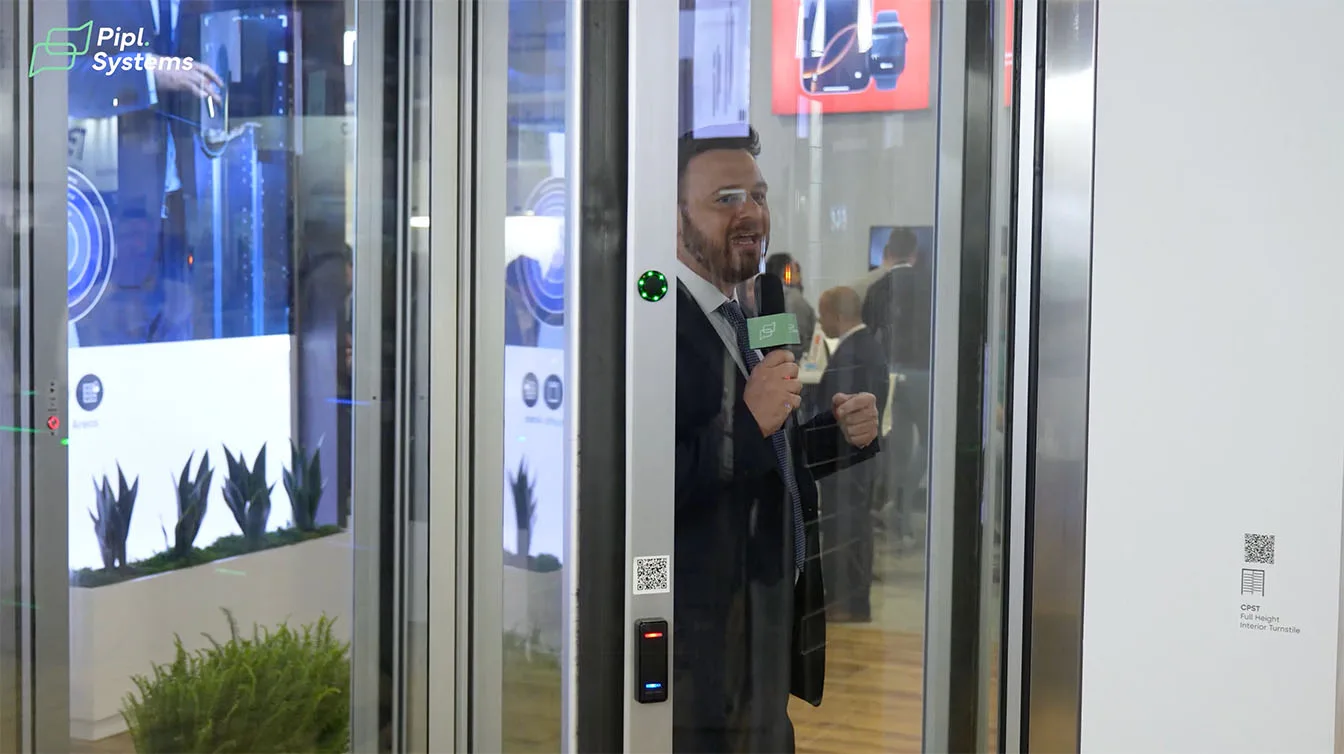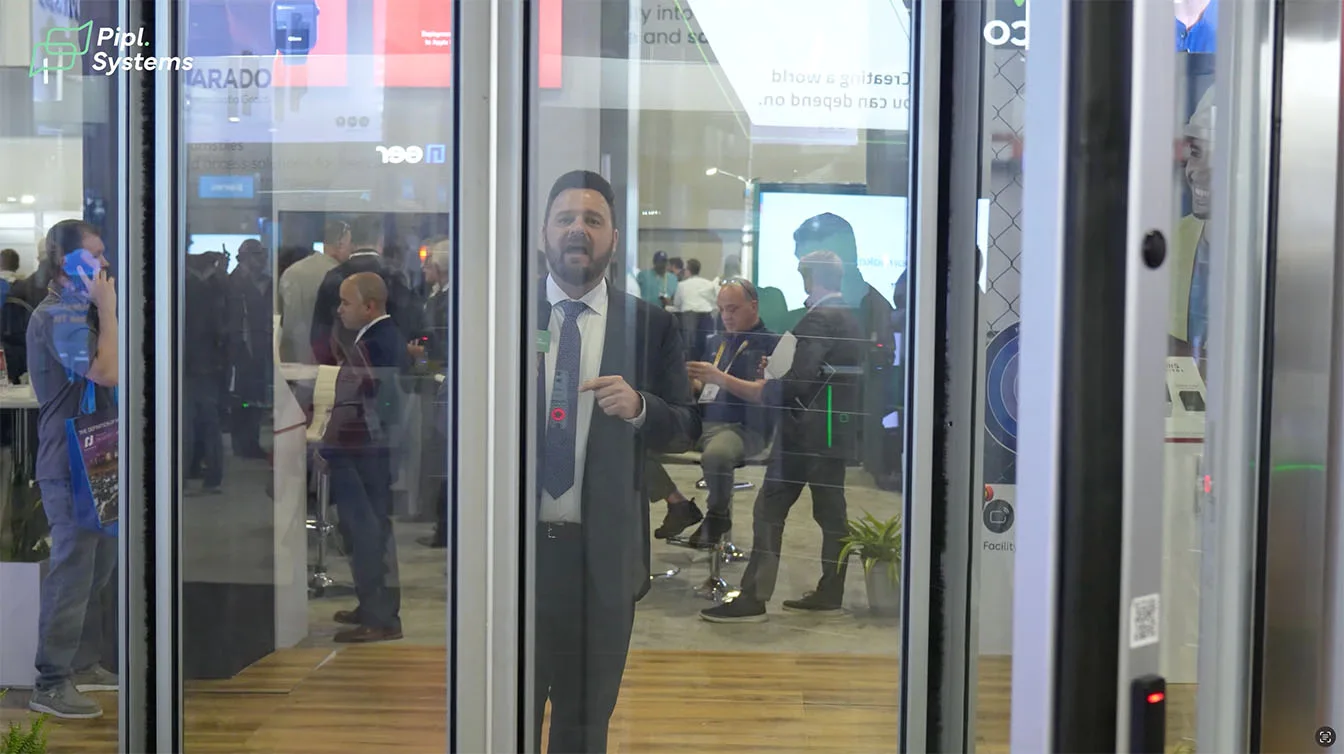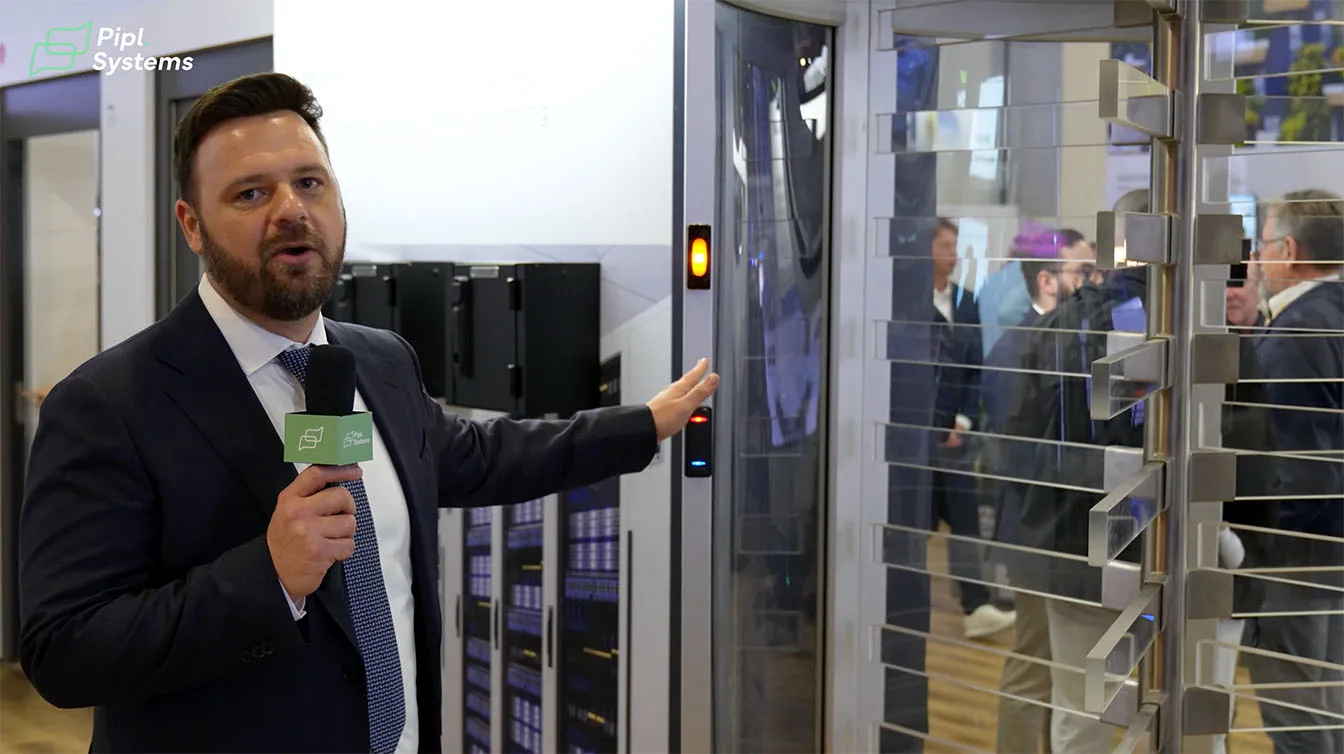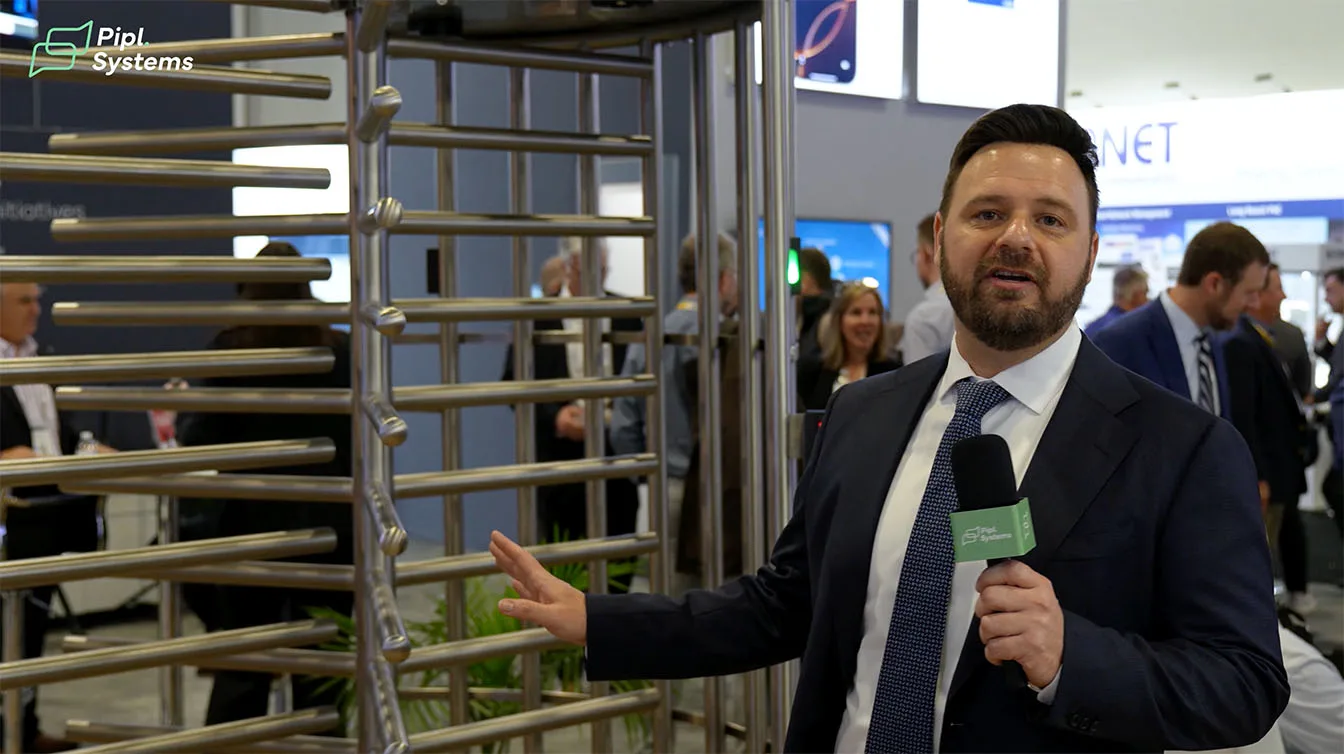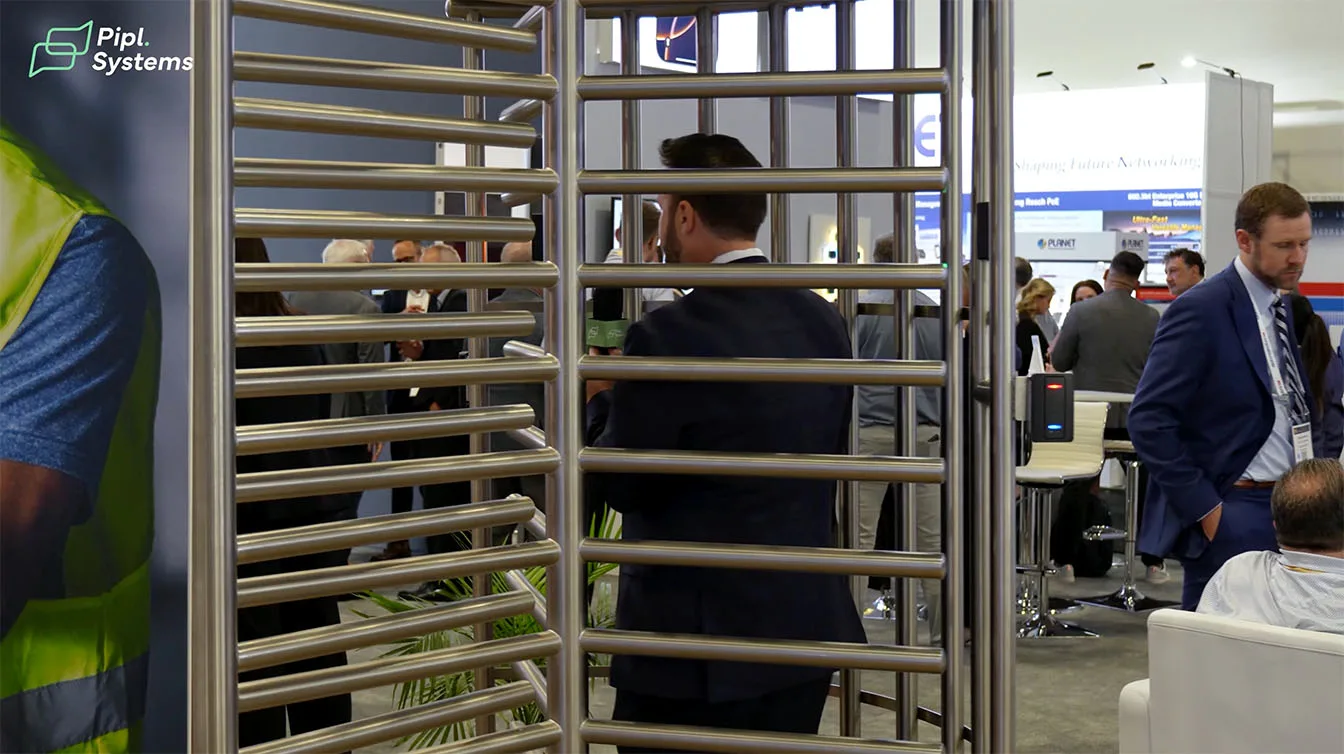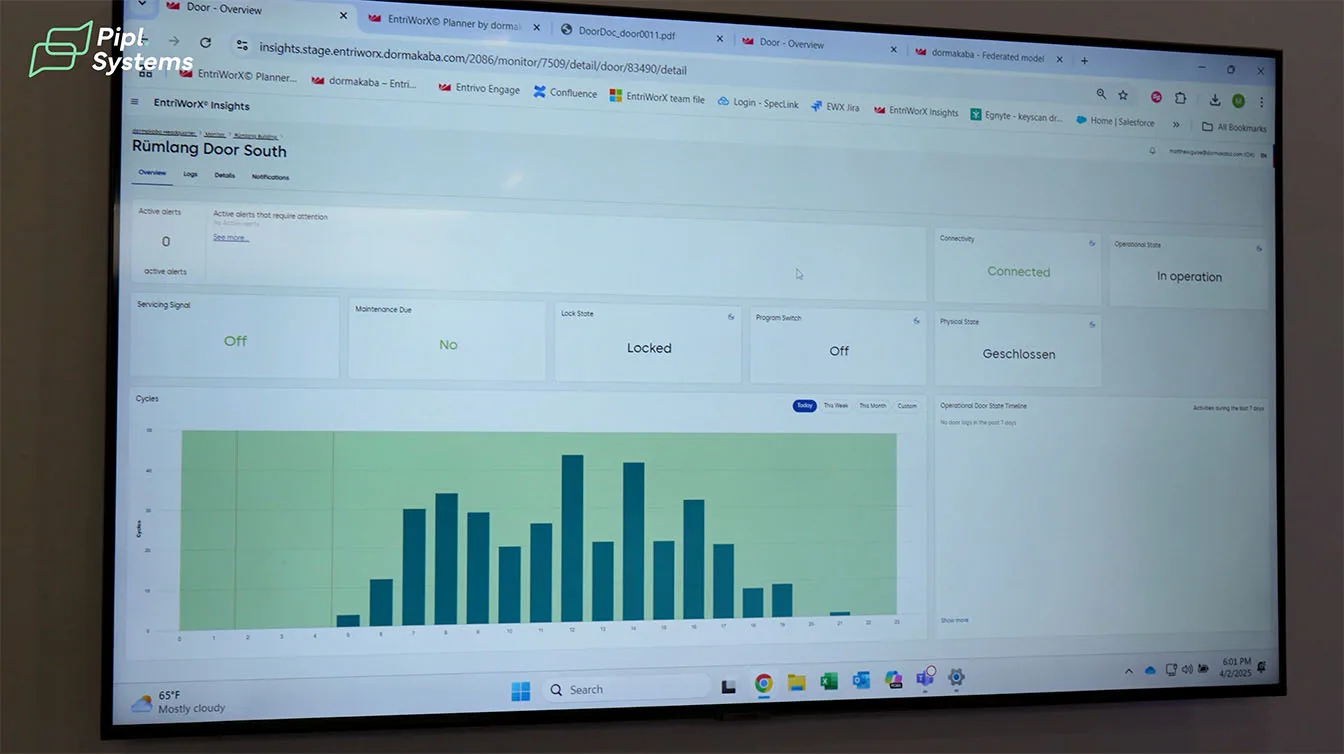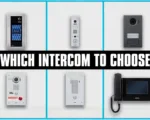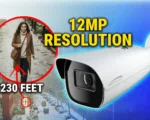Introduction with Matt at the dormakaba Booth
Setting the Stage at ISC West 2025
At ISC West 2025, the dormakaba Group took center stage with a full-scale walkthrough of their layered access and security solutions. As attendees entered the show floor, the dormakaba booth immediately drew attention with its large-scale interactive layout. Representing both dormakaba and Alavarado solutions, the booth provided a comprehensive view into how modern access systems are evolving for commercial, government, and multi-tenant facilities.
Meet the Team Behind the Showcase
The walkthrough was led by Mathew Beach, Product Marketing Manager at dormakaba, who introduced the company’s multi-layer approach to security. Each zone was presented in sequence, from exterior access points to high-security interior compartments.

Overview of Layered Security: From Perimeter to High-Security Zones
Understanding Security From the Outside In
dormakaba structured their booth to reflect real-world security infrastructure, starting with perimeter security and ending deep inside restricted access zones. This layered design demonstrates how a building’s protection strategy can be configured to suit various risk levels and access types.
“This year at ISC West, we’re doing a layered security solution.”
Mapping Layers of Protection
An infographic displayed at the booth illustrated each zone: perimeter, facility exteriors, common areas, interior spaces, and high-security rooms. Visitors followed this sequence through live product demonstrations and operational scenarios.
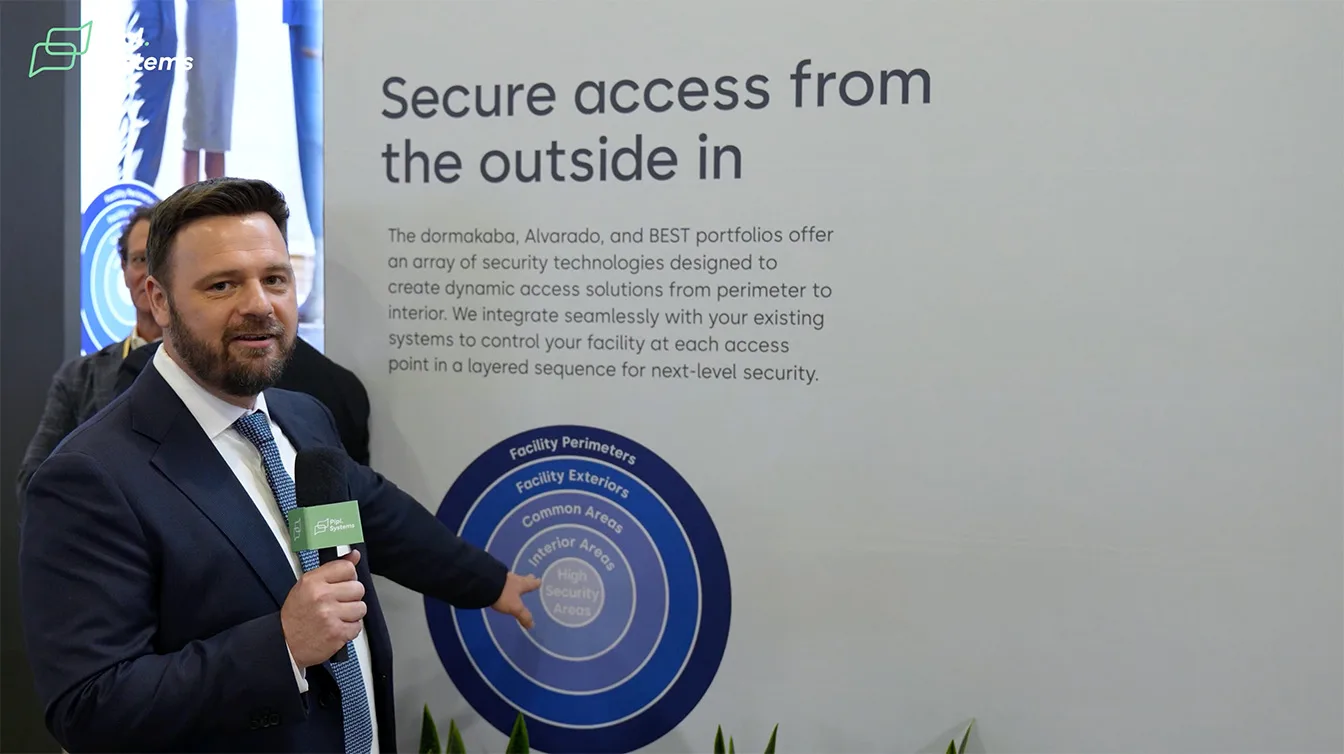
The wall infographic (visible behind Matt Beach in the second photo) broke this structure into five concentric layers:
- Facility Perimeters
- Facility Exteriors
- Common Areas
- Interior Areas
- High Security Areas
“Starting from perimeter solutions going to facility exteriors, common areas, interior areas, and high security areas.”
Passive Entry Solutions for Exterior Access
Sliding Doors for Healthcare and Multi-Tenant Sites
The tour began at the outermost layer of access: the building’s exterior. dormakaba demonstrated how passive entry solutions, such as automatic sliding doors, serve as the first line of access for large buildings. These systems don’t require user credentials and are commonly used in healthcare, corporate, and multi-tenant environments.
“You’re going to find this in most healthcare facilities, corporate facilities, and multi-tenant facilities as well.”
The ESA400 Sliding Door was one of the products referenced during the walkthrough. It’s a fine-frame, full-breakout automatic slider ideal for upscale entrances. With its elegant design and tight weather-sealing, the ESA400 is suited for interior or exterior use in retail stores, hospitals, or commercial buildings.

Passive Entry vs Credentialed Access
This first access layer plays a critical role in user flow and convenience. It allows quick, touchless entry for low-security zones while preparing users for the credentialed checkpoints deeper inside the building. The ESA400 system ensures accessibility and visual continuity for modern spaces.
“The exterior is going to be a passive entry solution… something like an automatic slider.”
Lobby Turnstiles and Visitor Management
Reception and Credentialing for Guests
The journey inside most facilities begins at the common area. Visitors entering a dormakaba-secured building typically stop at a guard station or front desk to receive a temporary credential. This process is streamlined and secure, ensuring that every guest entering the building has a verified purpose.
The setup on display at ISC West 2025 included a suite of optical turnstiles designed by Alvarado, part of the dormakaba Group. These lanes are configured to accept temporary credentials and validate access instantly through card-based authentication.
“They’re going to stop at a guard station or reception desk to get authorized for a temporary credential.”
“From left to right, we have optical turnstile SVF, that’s called the Argus.”
Controlling Flow with Optical Barriers
The optical turnstiles are designed to prevent tailgating and unauthorized access while maintaining smooth pedestrian flow. Visitors are guided through clearly marked lanes with sensors that detect anomalies, and the system is optimized for both aesthetics and accuracy in high-traffic lobbies.
Each lane features glass panels, card readers with intuitive LED indicators, and customizable settings for entry and exit direction. These turnstiles not only enhance security but also help manage traffic with elegance and modern design.
Optical Turnstile Functions and Tailgating Demo
Tailgate Detection and Real-Time Alarms
A core feature of Alvarado optical turnstiles is their tailgate detection capability. At the booth, Matt Beach demonstrated how the system responds when someone attempts to enter behind an authorized user.
The real-time detection triggered an alarm, immediately notifying security staff.
“Try and sneak in behind me… You see, we have an alarm.”
“It notifies the guard station that an unauthorized entry attempt was made.”
This automated response reduces reliance on constant human supervision while improving accountability for building access points.
Ensuring One-Person Entry Validation
The SVF and SU5000 series turnstiles showcased at the dormakaba booth feature wrong-way detection, loitering alerts, and can be configured for bidirectional use or free exit depending on site requirements. These functions are part of the broader Alvarado lineup, engineered for high-security corporate lobbies, government offices, and institutional campuses.
ADA-Width Lanes and Assisted Access Options
Designing for Accessibility and Flexibility
ADA compliance was a clear priority in the dormakaba showcase. Several lanes featured 36-inch-wide passages to accommodate visitors using mobility devices. Argus 40 turnstiles with wider cabinets were installed in parallel to standard lanes, maintaining consistent flow and inclusivity.
“This here is a 36-inch width product — it will handle most mobility devices.”
The demonstration also covered how different width options allow sites to configure their entrance strategy to meet both security and accessibility goals.
Pedestrian Gates with Push-Button Activation
Where even more space is needed—for example, deliveries or larger wheelchairs—the SW1000 pedestrian gate fills the gap. Operated via a push button located at the guard station or reception counter, it offers assisted access without compromising control.
“You can have something like this SW1000 pedestrian gate integrated with a push button.”
This gate was shown in action at the booth, clearly integrated with the overall entrance management logic. Exit can be configured as passive or secured, depending on the facility policy.
Compact Argus V60 Optical Turnstile
High Security, Minimal Footprint
The Argus V60 from dormakaba’s Alvarado product line is one of the most compact optical turnstiles available in North America. Designed for architectural spaces where every inch matters, this turnstile offers credentialed access control without compromising design or performance. With its European design aesthetics, the Argus V60 is suitable for high-end lobbies, reception zones, and space-limited corridors. Despite its small profile, it integrates seamlessly with RFID readers and biometric scanners.
“Argus V60 has the smallest footprint of any optical turnstile on the market.”
“There’s very few places this won’t fit.”
Use Case: Streamlining Entry Points
The turnstile supports typical card-in/free-exit workflows but can be configured for bi-directional access. Its sleek housing and transparent swing barriers blend into corporate interiors while maintaining rigorous access policies. In tight installations, especially retrofits, the Argus V60 provides full functionality where standard models won’t fit. To understand how such systems operate within access control infrastructures, refer to this primer on door access control systems.
Interior Access via Swing Doors and Wave Sensors
Contactless Entry with ED Series Swing Door Operators
Interior movement within secured buildings often relies on controlled swing door access. dormakaba’s ED50/100/250 series swing door operators, seen at ISC West, are integrated for both convenience and control. In the video, we observe models from the ED Surface-Applied and ED-IG series. These support both passive entry via wave sensors and credential-triggered opening through proximity readers.
“You wave your hand in front of it, and it lets you in passively.”
“These can also be integrated with a card reader to limit access to departments.”
Departmental Segmentation and Restricted Zones
Facilities such as labs, executive suites, and HR departments require selective access. The ED series supports such segmentation via embedded readers, allowing facilities to enforce strict movement between internal zones. These operators are also ADA-compliant and available in surface, overhead concealed, and in-ground configurations. For reference on how selective access plays out in real scenarios, explore this case study on warehouse securing.
High-Security Unmanned Compartments with Anti-Tailgate Detection
SRD: The Security Revolving Door
To secure sensitive zones like R&D labs, records vaults, and critical infrastructure rooms, dormakaba offers the SRD – Security Revolving Door. This automated portal is designed to prevent piggybacking and tailgating using occupancy sensors. The version shown is likely the SRD-S4, featuring dual-person detection. The system rejects access attempts involving multiple occupants, forcing a full reset and re-authentication cycle.
“It’s detecting the number of people in that compartment.”
“If someone sneaks in behind you, it’ll kick both people out and require a re-scan.”
Autonomous Entry Control Without a Guard
Ideal for unmanned hallways or limited-access facilities, SRD doors automate credential validation without requiring personnel oversight. Integrated sensors detect unauthorized co-entry attempts in real time. The SRD also supports card stacking for smoother throughput. This technology aligns perfectly with anti-passback policies, described in this guide on anti-passback in access control.
Full-Height Turnstiles and Data Center Rack Access
Manual and Passive Options for High-Security Zones
The CPST full-height turnstile from dormakaba offers physical access control tailored for high-security applications. Its robust construction enables deployment in locations where continuous staff presence isn’t feasible, such as interior corridors leading to data storage or restricted zones. Configurable for both manual rotation and passive entry, CPST units serve as a final credential checkpoint deep inside the building infrastructure.
“This CPST is a full-height turnstile… you scan, push through.”
“Rack locks are common in colo data centers.”
“Most data centers are really focused on who is physically accessing what equipment.”
Protecting Physical Servers with RFID Rack Locks
In data centers, rack-level control is critical. Dormakaba’s RFID-based rack locks integrate seamlessly with centralized credentialing systems, allowing users to present a badge and access individual server cabinets. These are widely deployed in co-location environments where infrastructure is shared among multiple clients, and traceability of access is mandatory for compliance and SLA enforcement.
Perimeter Security with FMCT Turnstile and People Counting
Physical Barriers at the Edge of Facilities
The FMCT full-height turnstile acts as a secure boundary for critical infrastructure, installed along perimeter fence lines to validate every individual entering a site. This unit is engineered for outdoor use, integrating rugged build quality with credential verification systems. It suits facilities like data centers, utilities, and secure enterprise campuses where early-layer security is essential.
“This full-height FMCT turnstile is used within the perimeter line.”
“It monitors access to make sure only the right credential gets in.”
“This would be common in a corporate building or a multi-tenant facility with controlled perimeter access.”
Counting Occupants for Operational Insight
In addition to credential validation, the FMCT supports occupancy analytics by tracking authorized entries and exits. This data helps facilities enforce access rules and identify unusual usage patterns at remote gates or lesser-used entry points. Passive exit functionality ensures user convenience without compromising security metrics.
Centralized Door and Entry Analytics for Facility Insights
Real-Time Monitoring of Entry Points
EntriWorX Insights provides dormakaba users with live access data and system diagnostics across multiple entry points. The software platform displays total ingress and egress counts, locked/unlocked status, servicing signals, and door health metrics. For facilities with hundreds of doors and sensors, this real-time visibility streamlines maintenance and response.
“It keeps a total of how many people entered and exited.”
“It can alert you to a door that isn’t working and help with promotional targeting.”
“You’ll know which doors are used the most — even down to the hour.”
Identify Malfunctions and High-Traffic Zones
Beyond maintenance, entry analytics help optimize operational flow. The system highlights which doors experience the highest use, enabling more effective allocation of signage, staff, or security assets. Facilities using advertising at entry points, such as retail zones within large buildings, can also align campaigns with actual foot traffic.
Closing Remarks and Invitation to Connect via Website
Get More Info Direct from dormakaba
The dormakaba showcase at ISC West 2025 demonstrated a cohesive vision for intelligent, layered access control — combining mechanical hardware, software intelligence, and flexible integration. Solutions spanned interior, perimeter, and high-security environments, with a strong emphasis on operational efficiency and credential management.
Next Steps for Security Professionals
For integrators, facility planners, and end-users seeking guidance on next-generation access control, the dormakaba portfolio offers broad coverage and adaptability. As Mathew Beach concluded during the event,
“It’s great to see so many real-world solutions all in one place. Whether it’s for a multi-tenant building, data center, or campus — we’re making access control smarter and more sustainable.”
If you couldn’t attend ISC West or want to take the next step in your project planning, Pipl Systems is your gateway to security insights, product comparisons, and consultation options tailored for today’s access control landscape.
Frequently Asked Questions (FAQ)
What is the difference between a full-height and half-height turnstile?
Full-height turnstiles, like the CPST and FMCT by dormakaba, provide complete physical separation from floor to top frame and are often used for unmanned high-security areas such as data centers, utilities, or exterior perimeters. Half-height or optical turnstiles, such as the Argus V60, offer streamlined access in monitored lobbies or reception zones, prioritizing aesthetics and throughput.
Can dormakaba turnstiles integrate with third-party access control systems?
Yes. Most dormakaba turnstiles, including the Alvarado series, are designed with open integration capabilities and support industry-standard Wiegand and OSDP protocols. This allows seamless communication with platforms like LenelS2, Genetec, HID, and others.
How does anti-tailgating technology work in optical and revolving doors?
Anti-tailgating is achieved through sensor arrays that detect unauthorized individuals trying to enter behind an authenticated user. In solutions like the SRD Security Revolving Door and Argus optical lanes, these sensors trigger visual or audible alerts and may even lock down the lane to prevent entry until cleared.

What is the best way to secure data center server racks?
Server rack access is best controlled via individual locking mechanisms tied to central access credentials. dormakaba’s rack lock solutions use RFID authentication to grant authorized access per rack while maintaining full audit trails. These are ideal for colocation and enterprise data center environments.
How do I ensure ADA compliance in a secured entryway?
ADA-compliant access solutions include wider optical lanes (typically 36 inches) and swing gates such as the SW1000. These systems allow mobility devices to pass through with the same security level, often triggered by a push-button or badge scan from reception.
What is EntriWorX Insights and why should I use it?
EntriWorX Insights is dormakaba’s cloud-based monitoring platform that provides real-time data on door usage, alerts, and performance. It supports preventive maintenance, traffic flow analysis, and access auditing — all in one unified dashboard, helping facilities maintain operational readiness and compliance.
